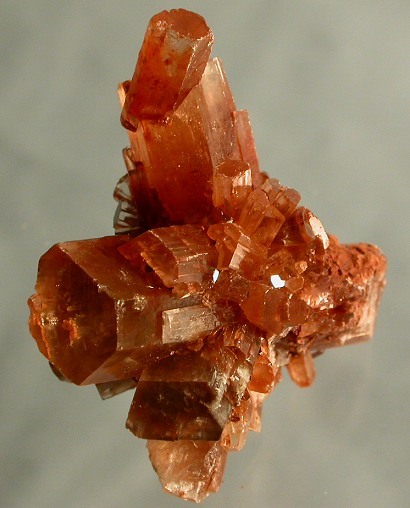| Crystal system | Orthorhombic |
| Transparency | Transparent to Semi-transparent |
| Luster | Vitreous or silky |
| Fracture | sub-conchoidal to splintery |
| Cleavage | distinct pinacoidal |
| Specific Gravity | 2.94 |
| Hardness | 3.5 to 4 |
| Optical Character | Biaxial - ; Double Refractive |
| Refractive index | 1.530-1.685 |
| Birefringence | 0.155 |
| Dispersion | |
| Fluorescence | May be exhibited |
| Pleochroism | |
| Chemical Formula | |
| Comments | Attacked by acid HCL |
| Streak | |
The principal interest that aragonite (ah-RAG-oh-nite) holds for the jeweler is the fact that it is the major constituent of most pearls. In nature, however, it occurs occasionally as clear crystals and as the usual constituent of stalactites and stalagmites in limestone caves.
Both types have been cut as curiosities or for collectors; therefore, a brief mention of its properties as a natural inorganic mineral is warranted.
Aragonite has the same chemical composition as calcite (calcium carbonate) but is the less stable form. It belongs to the orthorhombic system, and twinning sometimes makes the crystals assume a pseudo-hexagonal symmetry. Unlike calcite, it has distinct, not perfect, cleavage; however, like calcite, it is too soft for durability. Aragonite is much less common in its occurrence than calcite. In its massive, crystalline-aggregate form it is often used for carvings and small souvenirs, as is calcite. Stalagmites and stalactites, which have a concentric structure, are occasionally stained and carved. Clear, brown crystals from Baja California, Mexico, have been faceted for collectors.
Aragonite received its name from Aragon, Spain, an early locality for the mineral. Other notable localities are in Czechoslovakia; Bohemia; Austria; Mt. Vesuvius, Italy; England; and Bolivia. It occurs in the United States in Pennsylvania, Texas, Iowa, Missouri, South Dakota, New Medico, Arizona and Colorado. It is most commonly associated with gypsum and beds of iron ore.
The hardness of aragonite is 3 1/2 to 4, the luster is vitreous (silky on specimens that resemble satinspar), the streak is white, and the fracture is subconchoidal to splintery in massive material. The specific gravity is about 2.94, and the refractive index is 1.530 - 1.685, with a consequent birefringence of .155. As carbonates, both aragonite and calcite effervesce when a drop of acid is placed on them.


